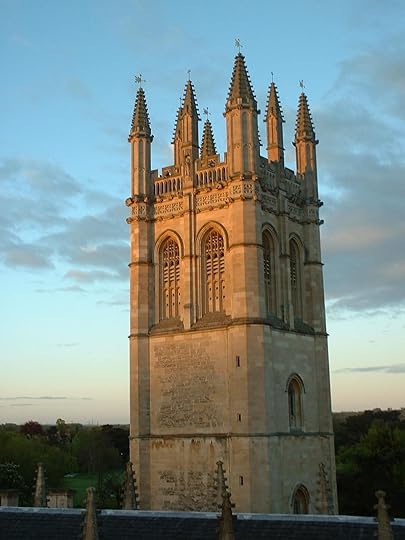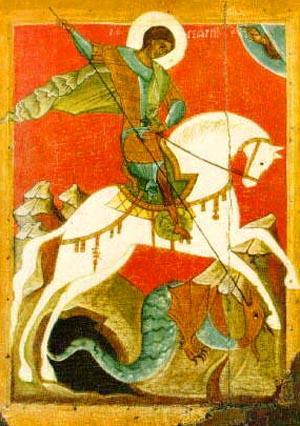Stephen Morris's Blog, page 38
May 20, 2016
Decoration Day

Originally called Decoration Day, the holiday was created to commemorate the roughly 625,000 Union and Confederate soldiers who died during the Civil War.
Memorial Day, the holiday which many in the US consider the beginning of summer, was originally known as “Decoration Day” and was the commemoration of those fallen in battle — at first, those who had fallen in the battles of the Civil War and then those who had fallen in any battle. People went to the burial grounds to decorate the graves of the fallen with flowers and banners. They might also have picnics, an American variation on the ancient “memorial meals” held in honor of the dead.
Decorating graves and meals to mark certain anniversaries of death were common in Greek, Roman, and Jewish, as well as early Christian, societies. One of the benefits of joining a burial society or club in classical Rome was that the club members were obligated to hold meals in honor and memory of the deceased. Sometimes food was left atop the grave for the departed, as well as shared among the living. It was these annual memorial meals at the gravesides of the dead that eventually became the annual saints days to mark the “birthday into heaven” of the dead.
Graves would be decorated not only to mark the burial site but to appease the dead as well, who might come back to harass their heirs for neglecting their graves. Flowers, a marker of life, were among the most common means of appeasing the dead although more substantial and permanent decorations — such as carvings, headstones, or statues — were used by the wealthy.
Nowadays often considered a scary or forbidding location, graveyards and cemeteries were common places for communities to gather. Over the centuries, many rules developed to curtail dancing, markets, drinking, and parties among the graves which only means that people kept dancing and drinking and holding markets or parties among the dead. No one makes rules against things that don’t happen, after all.
This year, how many Americans will mark the unofficial beginning of summer by visiting a graveyard?
The post Decoration Day appeared first on Stephen Morris, author.
May 13, 2016
Charles IV birthday

Charles IV is best known today for the Charles Bridge that unites Prague across the Vltava River.
Charles IV, king of Bohemia and Holy Roman Emperor, celebrates his 700th birthday on Saturday, May 14! He made Prague the cultural and political capital of Europe and the Beautiful Style that he championed made Prague the artistic center of Europe for nearly 100 years. There are several events in Prague to celebrate Charles’ 700th birthday!

Charles IV wanted his stone bridge, built in 1357, to be a masterpiece of occult workmanship to protect his beloved city of Prague.
He is best known today, however, for the magnificent stone Charles Bridge which he had built to span the Vltava River in 1357 to replace the original wooden Judith Bridge which had been washed away by a flood in 1342. In order to protect the city, Charles ordered massive amounts of magical reinforcements to be incorporated into the bridge as it served as the principal means of crossing the Vltava for several hundred miles in either direction and helped make Prague one of the most important business centers in central Europe.
Construction began on Charles Bridge at 5:31am on 9 July 1357 and Charles IV himself laid the first stone. This exact time was very important to the Holy Roman Emperor because he was a strong believer of numerology and this specific time, which formed a numerical bridge or palindrome (135797531), reinforced the bridge’s strength. He had eggs used in mixing the mortar, partly because their chemical composition made the mortar stronger and partly because eggs were so important in alchemy. Charles had a brief poem, each line a palindrome, inscribed on a watchtower on the Old Town side of the bridge in order to confuse any devils that might be lurking in the shadows and waiting to cross the bridge:
SIGNATESIGNATEMEREMETENGISETAUGIS
ROMATIBISUBITOMOTIBUSIBITAMOR
“Reveal yourself as a sign in the sky though in vain you reach for me,
your desire.
Rome, the motion of the stars suddenly brings you love.”
Prague has escaped the ravages of time and history nearly unscathed: no major fires or epidemics, no with hunts, no battles or bombings. The magic of the Charles Bridge seems to have worked!
Click here for events in Prague this year to mark the 700th birthday of Charles IV.
The post Charles IV birthday appeared first on Stephen Morris, author.
May 6, 2016
Stars and Cards: Taurus

“The Golden Tarot of the Tsar” (by A.A.. Atanassov and available thru Lo Scarabeo) depicts the Mother of God as the Empress, St. Parasceva as the High Priestess, and an anonymous woman martyr as the Queen of Pentacles.
Taurus people love everything that is good and beautiful, and they are often surrounded by material pleasures. People born under Taurus (April 20 – May 20) are very sensual and tactile. Touch is extremely important for them, both in business and in romance. Stable and conservative, Taurus is among the most reliable signs of the zodiac. Stubbornness is a trait that forces them to stick with projects to the end, in order to comply with the standards. As an earth sign (associated with the tarot suit of Pentacles), Taurus can be overprotective of their loved ones. They are great in making money and they will stick to their projects until it is successfully completed.
Bulls are often known for their stubbornness, but this can also be interpreted as a complete commitment to the execution of tasks. This makes Taurus people excellent workers and great friends, because they are always there, no matter what.
Their ruling planet Venus (associated with the tarot Empress), represents love, attraction, beauty and creativity. Thus, Taurus can be an excellent cook, entertainer, artist. They are loyal and don’t like sudden and unwanted changes. The moon, associated with the High Priestess card, is considered more important than usual in an astrological chart when it is found in the sign of Taurus.
These cards, together with the Bull, ask us several questions. Do you need spiritual guidance from a wise counselor? Are you being as fruitful as you can with the gifts nature has given you? Have you been paying enough attention to your inner life or just focusing on the outer life? Where are you in the cycle of planting your seeds, cultivating your garden and reaping what you have sown? In what part of your life do you need to “die” in order to be reborn?
The post Stars and Cards: Taurus appeared first on Stephen Morris, author.
April 29, 2016
May Day! Happy Summer!

Magdalen Tower, Oxford, is the center of the historic May Day celebrations in the university town.
May Day celebrations appeared in pre-Christian times, with the Floralia, festival of Flora, the Roman goddess of flowers, during the Roman Republic era; during the Middle Ages, the Walpurgis Night celebrations of the Germanic countries marked the last winter frolic of witches and devils. May Day is also associated with the Gaelic Beltane, most commonly held on April 30. The day was a traditional summer holiday in many pre-Christian European pagan cultures. While February 1 was the first day of spring, May 1 was the first day of summer; hence, the summer solstice on June 25 (now June 21) was Midsummer.
Secular versions of May Day, observed in Europe and America, may be best known for their traditions of dancing around the Maypole and crowning the Queen of May. Fading in popularity since the late 20th century is the giving of “May baskets,” small baskets of sweets or flowers, usually left anonymously on neighbors’ doorsteps. I remember making May baskets in elementary schools and Maypole games on the playground.
May Day is celebrated at the University of Oxford with special gusto. The day starts early (at 6 a.m.!) with the Magdalen College Choir singing a hymn, the Hymnus Eucharisticus, from the top of Magdalen Tower, a tradition of over 500 years. Large crowds normally gather under the tower along the High Street and on Magdalen Bridge. (Magdalen Tower is one of the oldest parts of Magdalen College, Oxford, situated directly in the High Street. Built of stone from 1492, when the foundation stone was laid, its bells hung ready for use in 1505, and completed by 1509, it is an important element of the Oxford skyline. At 144 feet high, it is the tallest building in Oxford. It dominates the eastern entrance to the city, towering over Magdalen Bridge and with good views from the Botanic Garden across the street.) This is then followed by general revelry and festivities including Morris dancing, impromptu music, etc., for a couple of hours. There is a party atmosphere, despite the early hour. In fact, there are normally all-night balls the night before, so some people (especially students) are in formal attire (e.g., black tie/white tie or ball gown).
The post May Day! Happy Summer! appeared first on Stephen Morris, author.
April 22, 2016
St. George’s Eve and the Master of Wolves

Russian icon of St. George battling the dragon
There are many legends and customs associated with the celebration of St. George’s Day on April 23 or the night before (St. George’s Eve). One of the most mysterious is that of the Master of the Wolves. On St. George’s Eve a man is wandering in the forest, becomes tired, and climbs into a tree to rest. He falls asleep. When he awakes, he sees the Master of the Wolves below him, who is giving out food to the wolves or werewolves, sometimes sending them in all directions to search for food. The last in line is the Lame Wolf. Since there is no more food, the Master of the Wolves says he can eat the man watching from the tree.
Among part of the southern Slavs (Serbs, Macedonians, Bulgarians) the legends and beliefs about the Master of the Wolves are also connected with numerous commandments, prohibitions and customs associated into the so-called “wolf holidays”. Legends about some type of Master of the Wolves can also be found in written form among the majority of southern and eastern Slavs, partially also among the Poles, and among the Estonians, the Gagauz in Moldavia, in Latvia, Romania and in an incomplete form even in France. His function, as can be established from the legends and beliefs, is to lead the wolves and determine what they may and may not eat. In some versions of the legend, the Master of Wolves is St. George himself! (For more about the Master of Wolves, read here.)
In the book Dracula, by Bram Stoker, evil things are said to occur on St George’s Day, beginning at midnight. The date of St George’s Day presented in the book, 5 May (on the Western, Gregorian calendar), is St George’s Day as observed by the Eastern Orthodox churches of that era:
“Do you know what day it is?” I answered that it was the fourth of May. She shook her head as she said again: “Oh, yes! I know that, I know that! but do you know what day it is?” On my saying that I did not understand, she went on: “It is the eve of St. George’s Day. Do you not know that tonight, when the clock strikes midnight, all the evil things in the world will have full sway?”(Excerpt from Dracula, 1897)
The post St. George’s Eve and the Master of Wolves appeared first on Stephen Morris, author.
April 18, 2016
Stars and Cards: Aries

The Tower and Seven of Wands cards from the “Tarot of Durer” by Lo Scarabeo.
As the first sign in the zodiac, Aries (March 21 – April 19) almost always marks the beginning of something energetic and turbulent. Aries people are continuously looking for dynamic, speed, and competition. They are always first in everything – from work to social gatherings. Thanks to its ruling planet Mars (associated with the Tower in the tarot deck), Aries is one of the most active zodiac signs. People born under the Aries sign, are meant to emphasize the search for answers to personal and metaphysical questions.
Aries is a fire sign. This means that it is in their nature to take action, sometimes before they think about it well. Their fiery ruler affects their excellent organizational skills, so you’ll rarely meet an Aries who doesn’t like to finish more things at once, often even before the lunch break! The challenges are increased when they are impatient, aggressive and vent anger on others.
The tarot Tower card portends sudden, unexpected change (often perceived as disaster but that interpretation of events is up to the one experiencing the sudden, unexpected change). Aries is also associated with the suit of Wands which is related to enterprise, ambition, enthusiasm, challenge and competition.
With these cards in mind, consider your spiritual journey and where you might need courage, change, or renewal in your life. Have you used your enterprise and daring to become a mature ruler of your own life? Have you acted in too arrogant a manner and called down the wrath of the gods upon yourself? What aspects of your life require “spring cleaning” at this time?
The post Stars and Cards: Aries appeared first on Stephen Morris, author.
April 8, 2016
Columbia University Bookstore

Take the #1 subway to the West 116 Street station for the April 12 reading/signing!
I hope all my local friends and readers will come celebrate the release of When Brothers Dwell in Unity with me! There will be a reading/signing of When Brothers Dwell in Unity: Byzantine Christianity and Homosexuality at the Columbia University Bookstore (Broadway at West 114th Street) on Tuesday, April 12 at 6 p.m. Even if you already have a copy of the book, come join us!
Columbia University was founded in 1754 as King’s College by royal charter of King George II of England. It is the oldest institution of higher learning in the state of New York and the fifth oldest in the United States. Its original location was in downtown Manhattan, next door to Trinity Church; it moved to its current location in 1897, after a brief stay in midtown.
The post Columbia University Bookstore appeared first on Stephen Morris, author.
March 31, 2016
Harvard Coop
Are you in the Boston area? Come to the Harvard Coop (the university bookstore) on Wednesday, April 6 at 7 p.m. for a reading-signing event. Discount copies of my study, When Brothers Dwell in Unity: Byzantine Christianity and Homosexuality (McFarland, 2016), will be available!
Harvard, the oldest institution of higher education in the United States, was established in 1636 by vote of the Great and General Court of the Massachusetts Bay Colony. The “COOP” (not the Co-Op as other cooperatives are called) opened for business in 1882 in a student dorm room in Harvard Yard. The “store” moved several times in the early years as the business grew and membership increased and finally settled in its current Harvard Square location in 1906. The building was re-built in 1925 and has been the COOP’s headquarters and an icon of Harvard Square ever since.
Harvard and Yale (my alma mater), the SECOND oldest institution of higher education in the United States, have long enjoyed a friendly rivalry. I am happy to meet readers at the Harvard Coop; might it be an omen or a portent that the event at Harvard was scheduled before any events at Yale have been confirmed? Hmmm…
The post Harvard Coop appeared first on Stephen Morris, author.
March 28, 2016
April Fools’ Day 2016
Chanticleer the rooster and Reynard the fox from Chaucer’s “Canterbury Tales.”
Precursors of April Fools’ Day include the Roman festival of Hilaria, held March 25, and the medieval Feast of Fools, held December 28, still a day on which pranks are played in Spanish-speaking countries.
In Chaucer’s Canterbury Tales (1392), the “Nun’s Priest’s Tale” is set Syn March bigan thritty dayes and two. Modern scholars believe that there is a copying error in the extant manuscripts and that Chaucer actually wrote, Syn March was gon. Thus, the passage originally meant 32 days after April, i.e. May 2, the anniversary of the engagement of King Richard II of England to Anne of Bohemia, which took place in 1381. Readers apparently misunderstood this line to mean “March 32”, i.e. April 1. In Chaucer’s tale, the vain rooster Chaunticleer is tricked by a fox.
The Roman celebration of Hilaria on the eighth day before the Kalends of April—March 25—in honour of Cybele, the mother of the gods; the day of its celebration was the first after the vernal equinox, or the first day of the year which was longer than the night. The winter with its gloom had died, and the first day of a better season was spent in rejoicings. All kinds of games and amusements were allowed on this day; masquerades were the most prominent among them, and everyone might, in his disguise, imitate whomsoever he liked, and even magistrates.
The post April Fools’ Day 2016 appeared first on Stephen Morris, author.
March 20, 2016
Fair Ladies and Necromancers

A statue of the Fair Lady of Hungary.
Two infamous figures in Hungarian folklore are sure to appear in one of my novels at some point! The first is the garabonciás – originally it meant “necromancer”, someone who works magic with the assistance of the dead; later in the Medieval Ages the meaning shifted into “the student of black magic”.
The garaboncid is a sort of magician of the Hungarian folk mythology. He mostly resembles the táltos (or shaman) in that the garaboncid is also born with teeth. He has to study at thirteen different schools to receive a magical book, with the help of which he can even fly.
He travels from town to town in a tattered cloak, and knocks on the door of every house, asking for milk and eggs. If the householders say they don’t have any, although they really do, the garaboncid will tell them that he knows they do, and that “you will soon change your mind, but it will be late by then”. As punishment he summons big storms, hailstones, or murmurs a spell from his book, summoning his dragon, which he mounts and rides above the town. The long tail of the dragon sweeps down the housetops and pulls out the trees from the ground. The only way to keep a town safe from the garaboncid is to ring the church bells every day.
The other infamous character is the “Fair Lady,” a beautiful woman who is sometimes kind, sometimes wicked. She’s one of the goddesses of the Hungarian old religion, the Goddess of Love. According to some, a valley in northern Hungary was a sacrificial ground dedicated to the goddess.
The Fair Lady combines the most famous traits of fairies, witches and ghosts: she can be seen wandering outside in the dark after midnight, but mostly she’s invisible; she likes to swap her own evil, deformed-looking children with the newborn babies of townsfolks; according to legend, meeting her is deadly. The Fair Lady meets with other Fair Ladies at night in the church yard, where they dance and clap, and with their beautiful singing voices they lure a man to join them, and then they either dance the unlucky man to death, or take turns having sex with him and kill him by passing on various STDs.
BRIEF NOTE: A new review of When Brothers Dwell In Unity has just arrived. The Midwest Review of Books says that it is “… an exceptionally well-written, organized and presented theological treatise for both academic and non-specialist general readers with an interest in Christian theology, with respect to the LGBT community. … is very highly recommended for both community and academic library Christian Studies reference collections. It should be noted for personal reading lists [as well]….”
The post Fair Ladies and Necromancers appeared first on Stephen Morris, author.




